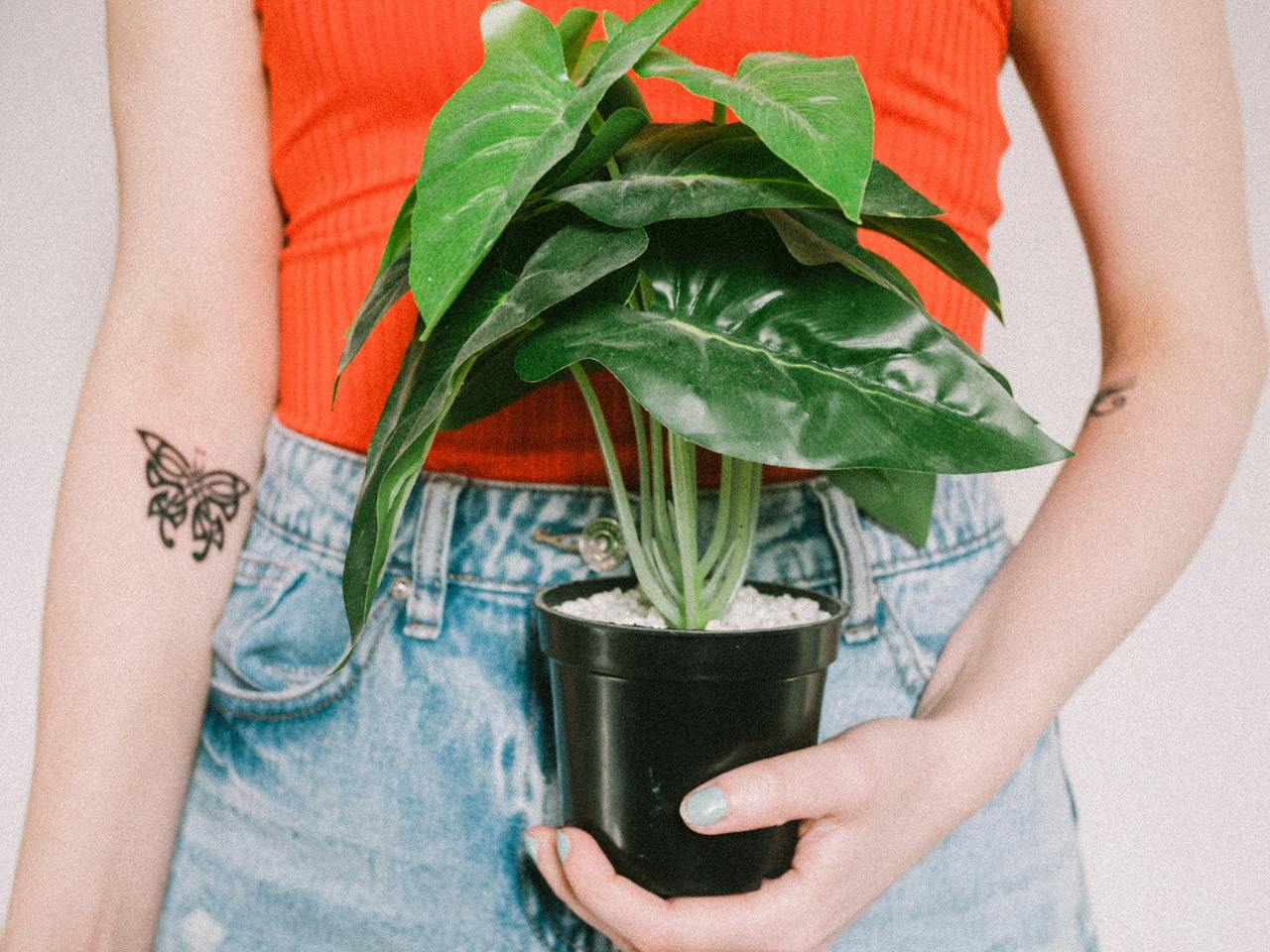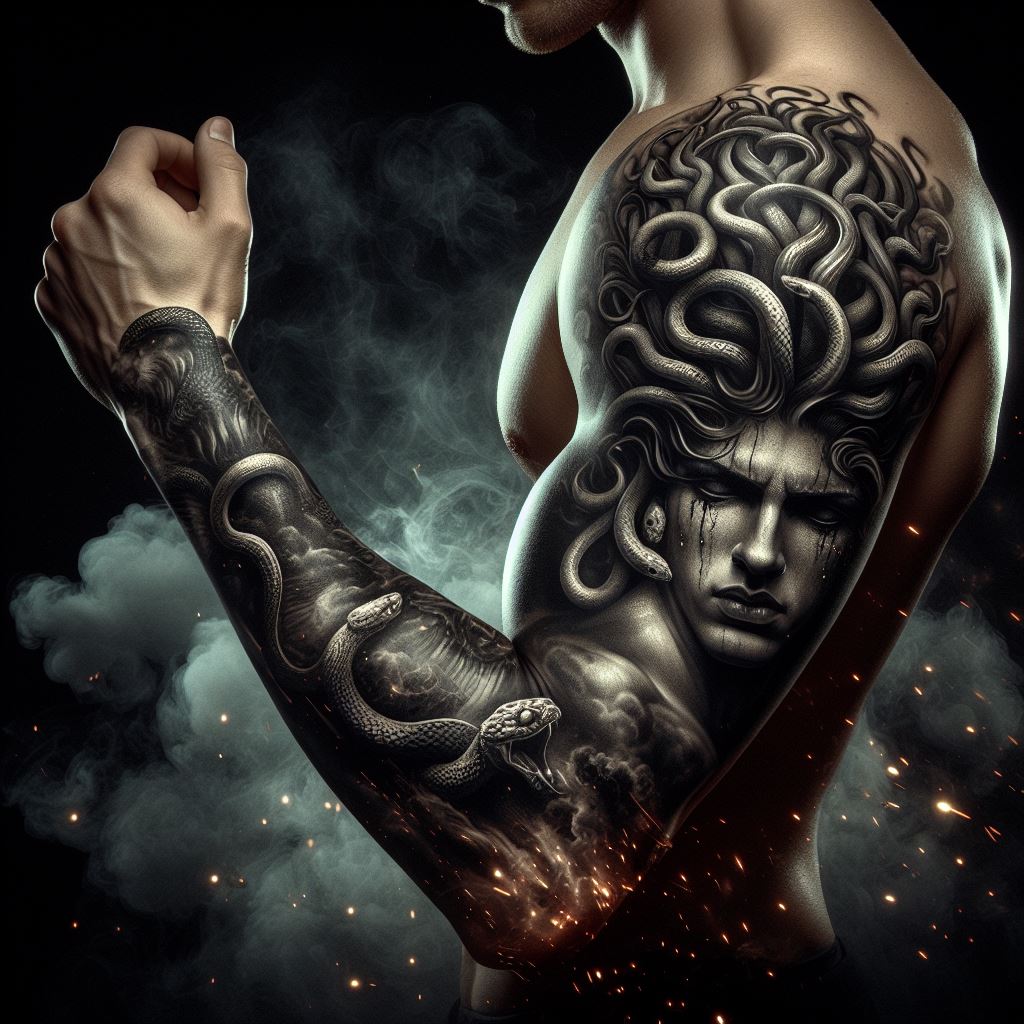Butterfly tattoos have long held a significant place in body art, their enduring popularity a testament to their universal appeal and symbolic depth. To many, these tattoos represent not just aesthetic value but also embody personal narratives, life philosophies, or significant milestones. Here, you will learn about the rich tapestry of symbolism associated with butterfly tattoos. You will explore the butterfly tattoo’s meanings across different cultures and personal interpretations.
This article will shed light on the myriad interpretations of these beautiful creatures, from representing personal transformation and rebirth to symbolizing freedom, beauty, and the fleeting nature of life.
- Historical Context
- The Butterfly as a Universal Symbol
- Butterfly Tattoos in Contemporary Pop Culture
- The Butterfly’s Transformation Symbolism
- Freedom and Independence
- Beauty and Aesthetics
- Connection to Nature
- Love and Romance
- Spirituality and Metaphysical Symbolism
- Gender and Femininity
- The Popularity of Butterfly Tattoos
- Contemporary Tattoo Artistry
- Choosing a Butterfly Tattoo
- The Stories Behind the Tattoos
- Conclusion
Historical Context
Tattooing has an ancient lineage dating back to Neolithic times. Over the centuries, this practice has evolved, embracing various styles, techniques, and symbols, reflecting cultural beliefs and personal narratives. Among these symbols, the butterfly carries a rich legacy.
Traditionally, butterflies were associated with femininity and beauty due to their delicate nature. They represented grace, elegance, and fragility, connecting with the feminine spirit and nature.
However, the role of butterflies in tattoo art has transformed over time. Today, they symbolize personal transformation, freedom, and the fleeting nature of life, echoing the butterfly’s life cycle and ability to fly freely. This evolution in symbolism reflects changing societal attitudes towards tattoos and the acceptance of individual expressions of identity.
The Butterfly as a Universal Symbol
Butterflies have been revered across cultures for their symbolic significance. In Greek mythology, Psyche, the goddess of the soul, is depicted with butterfly wings, symbolizing immortality and resurrection. In Japanese culture, butterflies personify the soul, whether living, dying, or dead. In Chinese folklore, they symbolize love and long-lasting romance. Native Americans view butterflies as a symbol of transformation. Christian symbolism also associates butterflies with spiritual transformation. These diverse interpretations enrich the symbolism of butterfly tattoos.
Butterfly Tattoos in Contemporary Pop Culture
Butterfly tattoos have become increasingly popular in the modern era, seen on red carpets, magazine covers, and social media. Celebrities and influencers have embraced the butterfly symbol as part of their personal branding, turning these tattoos into powerful statements of identity and self-expression.
Ariana Grande and Kylie Jenner, among other iconic personalities, have flaunted butterfly tattoos, sparking interest among their fanbases. Grande’s butterfly tattoo represents personal transformation in the music industry, while Jenner shares a micro butterfly tattoo with her partner as a symbol of enduring love.
The influence of butterfly tattoos extends beyond Hollywood to sports, literature, and fashion, making them a testament to their relevance in contemporary pop culture. They have earned their place as a timeless symbol and a fashionable choice in body art.
The Butterfly’s Transformation Symbolism
Metamorphosis, from caterpillar to butterfly, symbolizes personal growth. The journey begins with a confined creature, limited in perspective and mobility. Within lies the potential for extraordinary change, similar to individuals with a capacity for personal development.
The caterpillar forms a chrysalis, a protective casing, signifying intense internal change. This phase aligns with periods of introspection and self-nurturing. It’s a time of self-discovery and growth, marked by challenges that catalyze change.
Finally, the butterfly emerges, transformed and unrecognizable, representing liberation and ascension. Through trials and tribulations, we grow and evolve, shedding our former selves to emerge stronger, wiser, and ready to soar. This transformation process, symbolized by the butterfly, resonates deeply, giving the tattoo a universal appeal.
Many stories speak of individuals who have turned a new page, surmounted personal obstacles, or made meaningful life changes. One story belongs to Sarah, a yoga teacher from California, and the other to Mark, a retired military officer from Texas.
Sarah’s butterfly tattoo on her right shoulder is an homage to her journey of self-discovery and spiritual growth. “I went through major depression in my early 20s. Yoga and meditation became my lifeline, my chrysalis,” she shares. “The butterfly tattoo represents my transformation from a lost soul to a beacon of light for my students.”
In contrast, Mark’s story is steeped in physical resilience. The butterfly tattoo on his forearm symbolizes his rebirth after a severe combat injury. “After my injury, I felt trapped, like a caterpillar in a cocoon. I had to relearn basic tasks, from walking to writing. It was challenging, but it forced me to grow in ways I never imagined.” Mark’s butterfly tattoo was inked the day he completed his rehabilitation. “The butterfly is my badge of honor, representing my journey from weakness to strength. Every time I look at it, I’m reminded of my resilience and capability to evolve.”
These stories highlight the butterfly tattoo’s significance as a personal emblem of growth and transformation, capturing the essence of its universal appeal.
Freedom and Independence
The butterfly is a powerful symbol of freedom and independence, representing those who have overcome constraints to embrace their freedom. Laura, a successful entrepreneur from New York, sports a butterfly tattoo on her wrist as a reminder of her journey to financial independence. Growing up in a low-income household, Laura faced numerous challenges on her path to becoming a business owner.
Alex, a gender rights advocate from Canada, also uses a butterfly tattoo to symbolize their journey of self-discovery and acceptance. These examples highlight the significance of butterfly tattoos as emblems of personal freedom and independence, reflecting the human spirit’s resilience and desire for liberation.
Beauty and Aesthetics
Butterfly tattoos hold deep symbolic significance and are chosen for their aesthetic appeal. They offer endless creative possibilities for intricate designs. Watercolor butterfly tattoos, with their bright translucent colors, mimic watercolor paintings and captivate visually.
Geometric butterfly tattoos present a modern twist with minimalist yet striking designs. 3D butterfly tattoos add realism with shading and color gradients. Tribal butterfly tattoos draw inspiration from indigenous art, showcasing intricate patterns and bold lines with cultural significance.
Connection to Nature
Butterfly tattoos symbolize our connection to the natural world, reminding us of the beauty and interconnectivity of nature. They resonate with those who appreciate the outdoors and understand the importance of preserving biodiversity. The butterfly’s life cycle highlights the fragility of life and the significance of each ecosystem stage.
These tattoos can also represent our commitment to environmental sustainability. Butterflies serve as indicators of ecological health, making them a meaningful choice. For example, the Monarch butterfly’s decline due to habitat loss calls for conservation and change. Butterfly tattoos are not just beautiful art; they are a personal connection to nature and our role in the ecological picture.
Love and Romance
The butterfly, with its delicate and graceful nature, symbolizes love and romance. It is deeply rooted in various cultures and folklore, associated with the fluttery feeling of falling in love. Matching butterfly tattoos are chosen by couples as a unique expression of their love and commitment.
Emily and Ryan, high school sweethearts from Boston, have butterfly tattoos on their wrists. Maria and Carlos, a couple from Brazil, share a large, intricate butterfly tattoo that symbolizes their love and growth. Butterfly tattoos offer a personal and poignant symbol of romantic connection.
Spirituality and Metaphysical Symbolism
Butterflies hold profound spiritual and metaphysical significance in various cultures, symbolizing change, resurrection, and the soul’s eternal journey. They are a popular choice for expressing spirituality through body art.
In ancient Greek culture, the word for butterfly resembles the word for soul, suggesting a deep connection between the two. In Christian iconography, butterflies symbolize resurrection and the soul’s ascension to heaven, representing faith and divine grace.
Native American cultures see butterflies as symbols of joy and transformation. Some tribes believe they carry dreams and wishes to the Great Spirit, bridging the earthly and spiritual realms.
In Chinese and Japanese traditions, butterflies symbolize longevity, love, and a blissful marital life. They also represent the soul’s immortality and the cyclical nature of life and rebirth.
Butterfly tattoos allow individuals to express these beliefs and connect with their spirituality. They can honor loved ones, signify personal transformation, or represent spiritual freedom and self-realization.
In all these ways, butterfly tattoos serve as deeply personal and meaningful symbols of spirituality.
Gender and Femininity
Butterfly tattoos are often associated with femininity due to their delicate forms, vibrant colors, and symbolic ties to transformation and beauty. However, the perception of femininity is fluid, and the association with butterfly tattoos does not exclude people of other genders.
Many individuals across the gender spectrum embrace butterfly tattoos as a symbol of personal growth and resilience. Mark, for example, a retired military officer, chose a butterfly tattoo to represent his transformation following a combat injury. The universal themes embodied by butterflies – rebirth, transformation, strength in vulnerability – are human experiences and transcending gender norms.
Butterfly tattoos challenge traditional gender stereotypes by emphasizing individuality and diversity in symbol interpretation. They highlight that body art, like identity, is deeply personal and resistant to rigid categorization. The butterfly, with its rich meanings, is a symbol open to anyone who resonates with its symbolism, regardless of gender.
The Popularity of Butterfly Tattoos
Butterfly tattoos have become increasingly popular in recent years. According to findings by online art and design gallery SINGULART, Google search data revealed that butterfly tattoos are the most popular in the US, with 201,000 searches on average in a month.
The rise of social media, particularly platforms like Instagram and Pinterest, has played a significant role in this trend. Hashtags like #ButterflyTattoo and #TattooInspiration have created hotbeds of tattoo inspiration, with celebrities and influencers showcasing their own butterfly tattoos. For example, when Ariana Grande shared her butterfly tattoo on Instagram, it received over 5 million likes, inspiring many of her fans.
Butterfly tattoos have also become a viral trend on TikTok. The hashtag #ButterflyTattoo has amassed over 688 million views, with users sharing their tattoo journeys and incorporating transformative narratives that reflect the butterfly’s symbolism.
This widespread visibility on social media has not only popularized butterfly tattoos but has also sparked discussions about their symbolic versatility, encouraging individuals to explore and share their unique interpretations. The butterfly tattoo has transcended the realm of body art to become a symbol of storytelling and personal expression in the digital age.
Contemporary Tattoo Artistry
Contemporary tattoo artists are creatively incorporating butterfly themes into their work, blending styles and techniques to create stunning and unique body art. Notable artists like Lumpini and Dr. Woo have made a name for themselves with their vibrant and intricate butterfly designs. These artists, along with many others, are redefining the symbolic potential of butterfly tattoos, making them a timeless choice in the world of tattoo artistry.
Choosing a Butterfly Tattoo
Choosing a butterfly tattoo requires thoughtful consideration, as it’s not only a form of self-expression but also a permanent addition to your body. Here are five key tips to bear in mind if you’re thinking about getting a butterfly tattoo:
Personal Significance
The most important consideration is the personal meaning and significance of the tattoo. Butterflies hold a plethora of symbolic meanings, from transformation and resilience to love and spirituality. Choose a butterfly species or design that resonates with your personal story, beliefs, or experiences.
Design and Style
Butterfly tattoos come in a myriad of styles, from realistic and intricate to abstract and minimalistic. Spend time researching different designs, and consider working with your tattoo artist to create a custom design that reflects your unique vision.
Placement
The placement of your butterfly tattoo can significantly affect its appearance and visibility. Consider factors like your lifestyle, profession, and personal comfort when deciding on the tattoo placement.
Size
The size of your butterfly tattoo can impact its level of detail and visibility. Larger tattoos can accommodate more intricate designs, while smaller tattoos can be subtler and more discreet.
Tattoo Artist
Lastly, choosing the right tattoo artist is crucial. Look for an artist who is experienced in the style you want and whose work you admire. Additionally, ensure they maintain proper hygiene standards in their studio.
Remember, a butterfly tattoo is more than just a beautiful piece of art—it’s a symbol of your individuality and a testament to your personal narrative. Choosing a design that holds personal meaning can deepen this symbolism, turning your tattoo into a tangible reflection of your life journey, beliefs, and values.
The Stories Behind the Tattoos
This section will delve into the intimate stories that lie beneath the ink of butterfly tattoos. These narratives offer a poignant testament to the diverse ways individuals connect with the symbolism of the butterfly, shaping their tattoos’ design, location, and personal significance.
Jenna’s Journey
Jenna, a 24-year-old graphic designer, sports a vibrant Monarch butterfly tattoo on her shoulder. “I got this tattoo after overcoming a difficult period in my life,” she shares. “To me, the butterfly symbolizes my journey of healing and growth. Every time I look at it, I’m reminded of my resilience and strength.”
Peter’s Tribute
Peter, a 40-year-old chef, has a small, simple butterfly tattoo on his wrist. “This tattoo is a tribute to my mom who passed away,” he explains. “She loved butterflies and believed they represented the soul’s journey. Now, I feel like a part of her is always with me.”
These personal anecdotes underscore the profound impact and personal significance butterfly tattoos can hold. They go beyond being merely an aesthetic addition to the body, serving as a testament to personal stories, life experiences, and expressions of self-identity.
Conclusion
Butterfly tattoos, with their diverse symbolism and aesthetic appeal, continue to resonate with individuals worldwide, transcending cultural, gender, and generational boundaries. They serve as potent symbols of transformation, resilience, love, spirituality, and connection to nature, testifying to the human journey’s richness and complexity. Indeed, the butterfly tattoo, in its myriad forms and interpretations, is more than just a popular trend; it is a timeless testament to personal narratives, individuality, and the enduring power of symbolism in self-expression.





